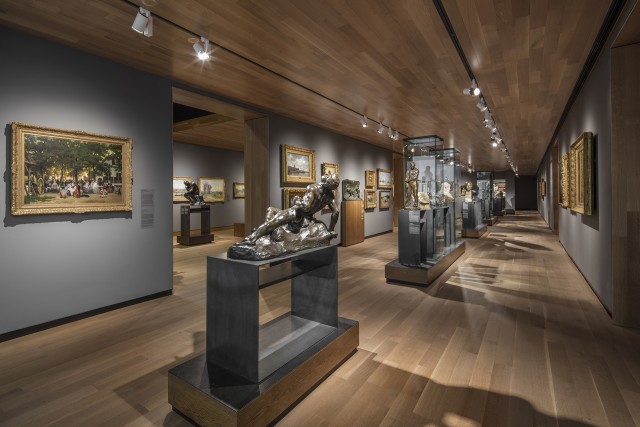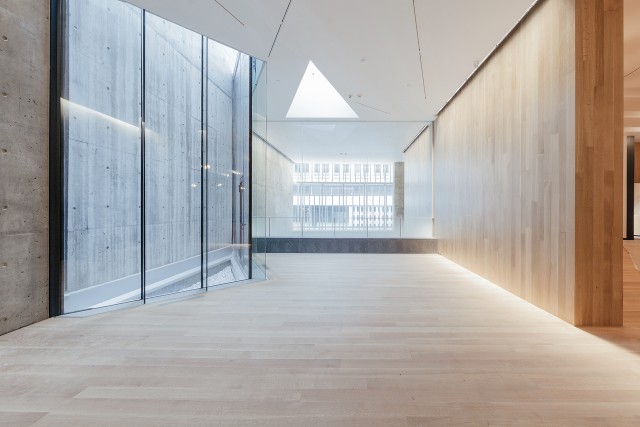Montreal Museum of Fine Arts' Michal and Renata Hornstein Pavilion for Peace
In 2013, Atelier TAG and Jodoin Lamarre Pratte architectes in consortium won the architectural competition organized as part of the city's 375th anniversary celebrations to endow the Montreal Museum of Fine Arts with a fifth pavilion dedicated to international art and education. Located on Bishop Street, southwest of the main pavilion, the Michal and Renata Hornstein Pavilion for Peace offers the community a unique view of the city and its architectural heritage, from the river to the mountains. Its galleries exhibit ancient and modern collections, as well as new acquisitions. This pavilion is also home to the Michel de la Chenelière International Atelier for Education and Art Therapy.
Location
Partners
Atelier TAG
Scale
4 000 m² / 24 M$
Completion
2013 — 2016
"With the consortium of Manon Asselin architecte and Jodoin Lamarre Pratte architectes, we feel that 1+1=3! The young firm TAG's creative and empathetic ability to respond to the challenges of public spaces is complemented by the meticulous approach and experience of Jodoin Lamarre Pratte architectes, a combination that will produce a boldly innovative design to carry the architectural history of the MMFA's complex into the 21st century."
Director and Chief Curator of the Montreal Museum of Fine Arts
On behalf of the members of the 2013 competition jury

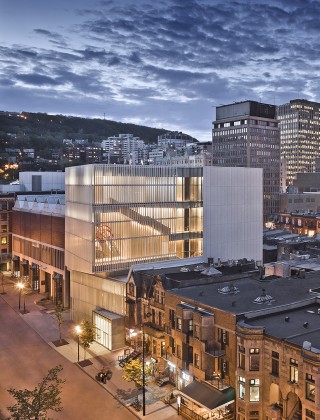
The project is characterized by a veil/architectural screen composed of aluminum strips, an "event stairway," a wood interior, illuminated lounge areas and suspended walkways above Bishop Street, large exhibition halls, workshops, and art therapy spaces. The program of this 4,000 m² addition is spread over six levels and includes functional links with the Jean-Noël Desmarais Pavilion, allowing for easy circulation between the two buildings.
In addition to the museum functions concentrated on the four upper levels, the program includes common areas—the "event stairway," the entrance hall, and a reception area for visitors—ateliers for courses and temporary exhibitions, a cafeteria that can accommodate groups of up to 260 children, cloakrooms, workshops for toddlers, and support services and spaces.
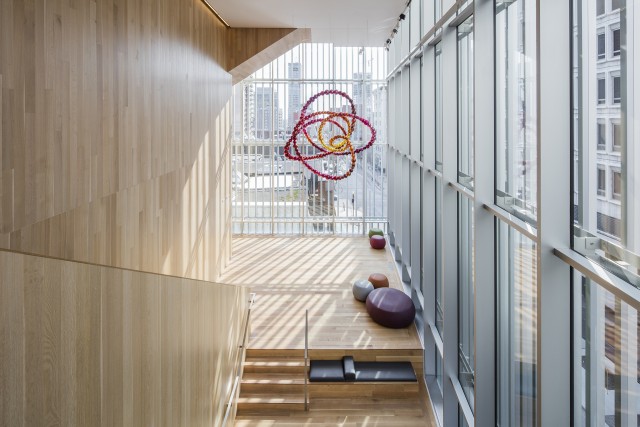
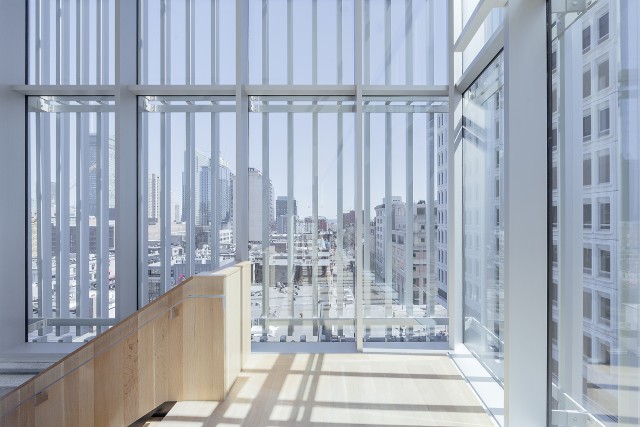
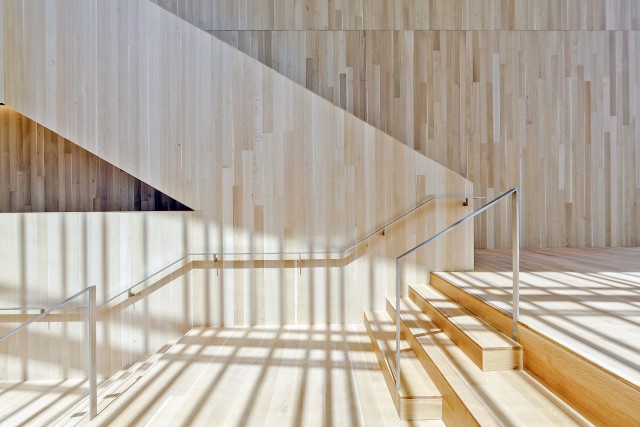
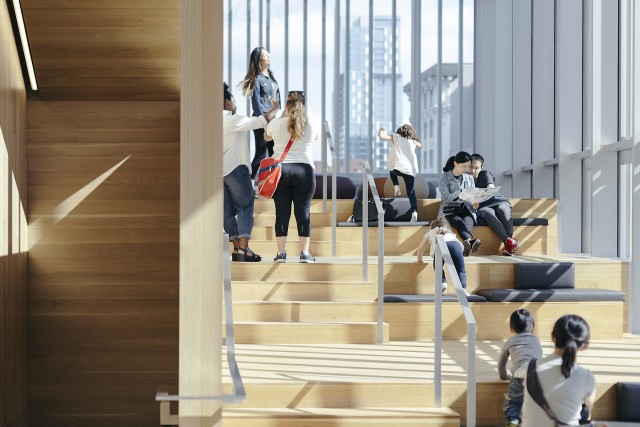
The event stairway offers a unique museum experience focused on visitors rather than objects. Aside from being an effective circulation element, this space is designed for strolling. It provides an interior urban promenade that is fluid and luminous, with breathtaking views of the mountain and the river, two important visual landmarks that help to orient visitors.
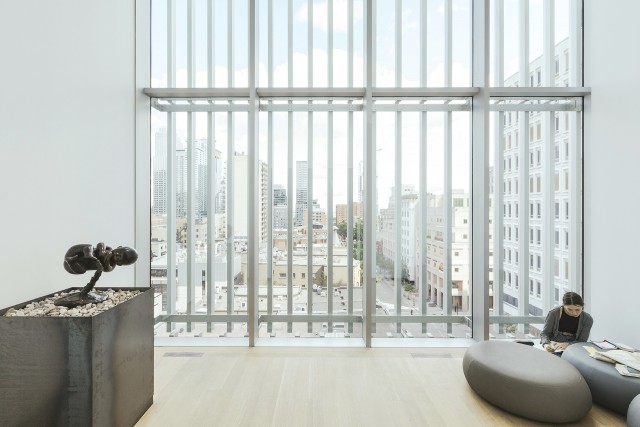
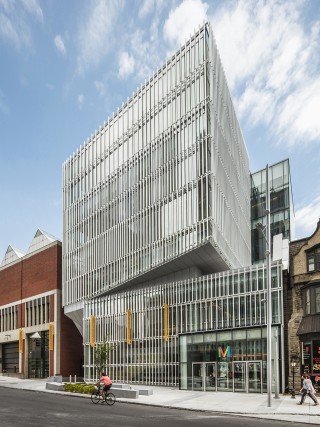
The glass volumes of the Pavilion for Peace are dressed in an aluminum lacework designed to modulate the light inside the museum and showcase the sense of rotation of the two building blocks—one aligned with the street and the other turned towards the mountain. The lacework is composed of rows of strips arranged at different spacings, which express the tension of the pivot point on the façade by a higher density. For each row, the number of strips was determined by following the Fibonacci sequence, from two to five rods, to create the different modulations.
The veil/screen is manufactured with custom-made extruded aluminum strips, which optimized production cost while guaranteeing high quality precision. The strips were mounted on a stainless steel substructure, which is supported by the curtain wall held by vertical mullions. The research work to find innovation solutions that led to the construction of this envelope is the result of a design process developed in close collaboration with the industry. Many tests were carried out to develop a unique assembly system, where the lightness of aluminum made the fine and elegant composition of the curtain wall components possible.
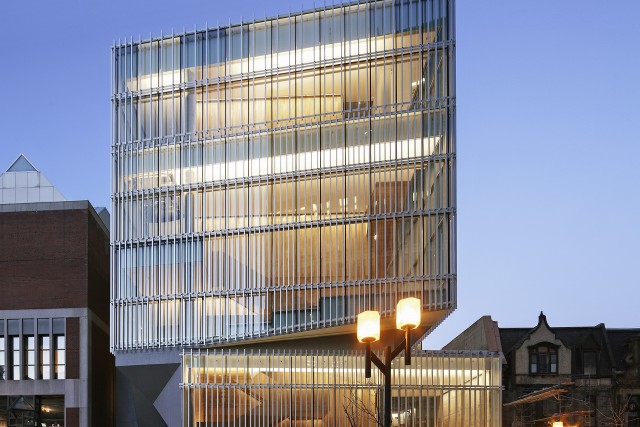
During the day, the pavilion envelope is animated by its environment and the changing light, while in the evening it turns into a lantern in the cityscape, revealing the warm wood spaces through the metal veil.
"You have created a building on which our seasons come to life through its walls. People will be able to discover and rediscover the magnificent works of foreign painters, sometimes under the glow of our winters, sometimes under the brilliance of our summers. Here, the genius of old masters of painting will meet the vision of Quebec masters of architecture. I can hardly imagine a more beautiful celebration of the human spirit!"
Former Premier of Quebec
Excerpt from the address given during the unveiling of the project

The concept affirms major concerns regarding sustainable development, local consumption, and respect for the surrounding heritage. The following main elements were considered: white roofs limiting heat islands in urban areas, abundance of natural light, LED lighting, "low-E" triple glass, white oak processed in Quebec, superior insulation, and energy efficiency including energy recovery via mechanical systems. The team made sure to achieve museum standards of international quality while by giving a special effort to the simplicity of construction details and by favouring the use of technologies and materials from Quebec.
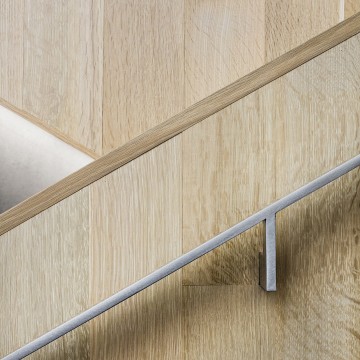
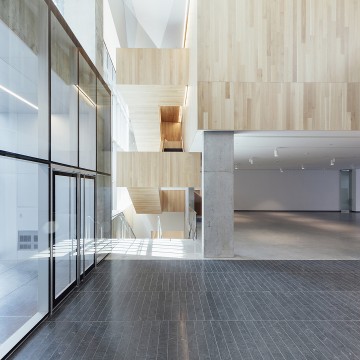
"The Pavilion for Peace beautifully and effectively fulfills its purpose of providing visitors with galleries, an all-in-one stairway, corridor, and linear public living room that winds its way up to the building. It works on both sides of its walls, providing a generous zone for gallery-goers within, while visually projecting its energy and activity to the city outside. The building is a sensitive insertion into the urban fabric, with a jogged façade that addresses the scale of the adjacent historic houses. The cool, abstract glass-and-aluminum palette of the exterior is balanced with the warm, natural wood of the interior. Its generosity of space and its strategic spatial zoning facilitates both efficient visitor movement and optional socialization. Visible from a block away and transforming into an illuminated lantern at night, the pavilion offers a transparent and welcoming transition from the gallery to the city."
Governor General's Medals in Architecture — 2018 Recipient

